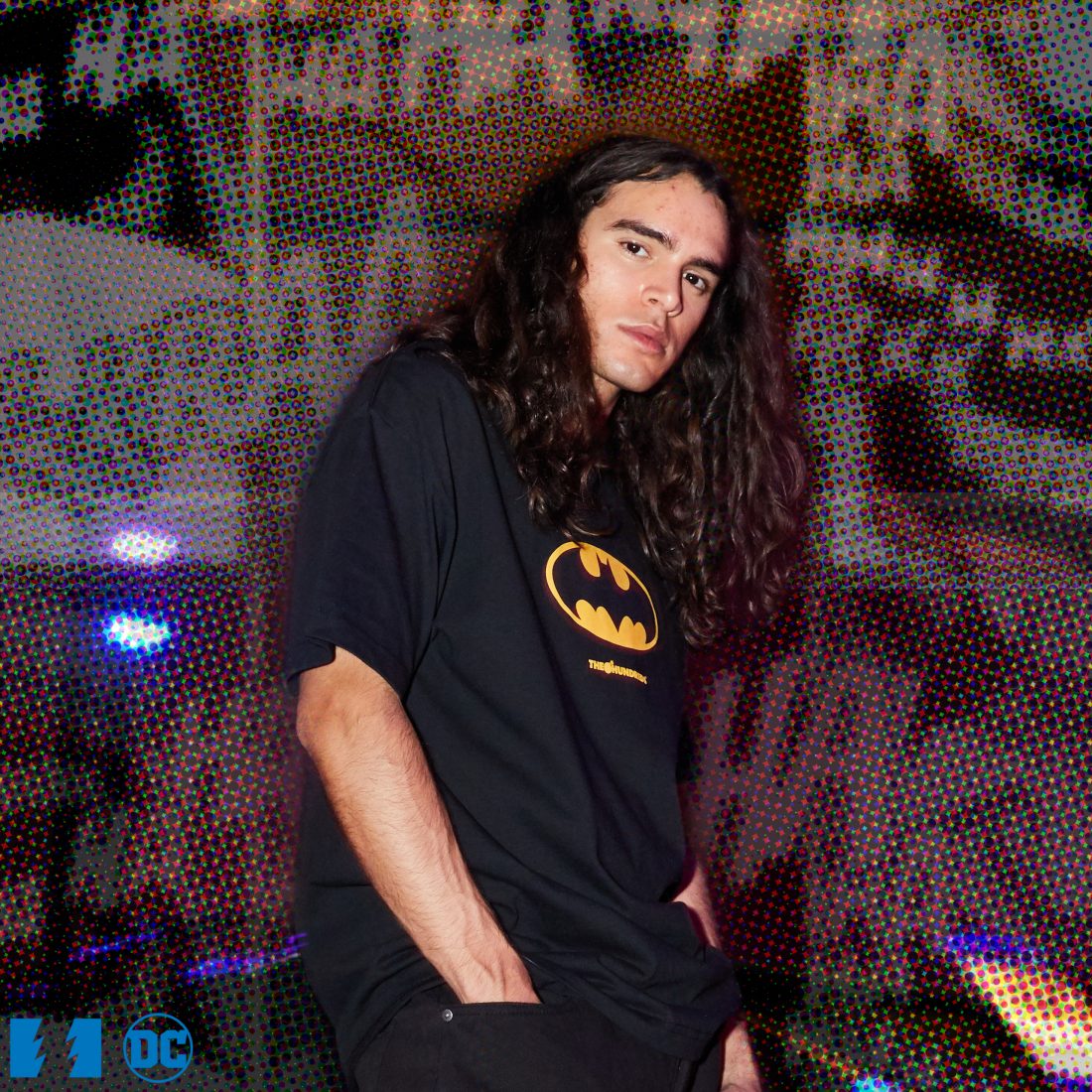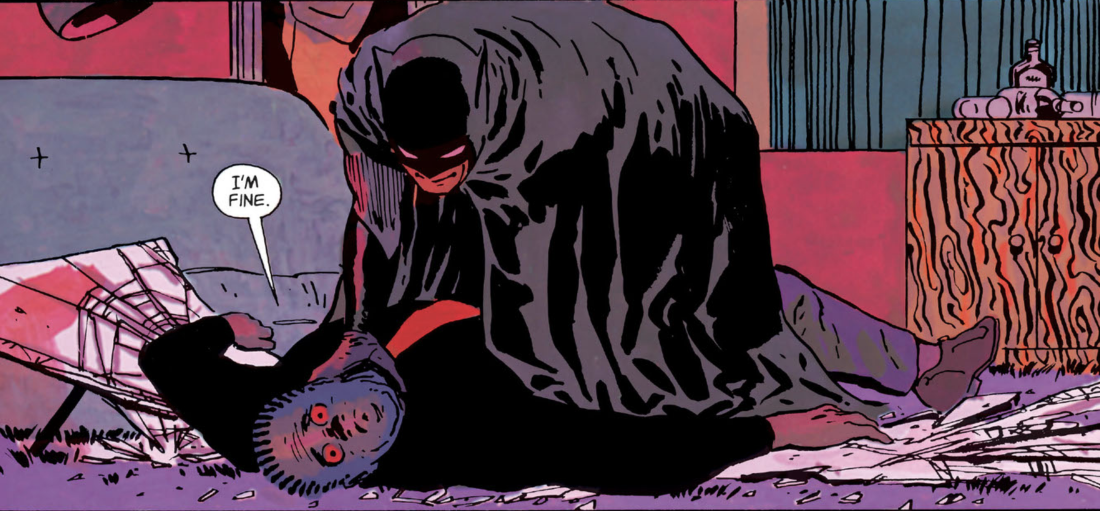
You’ve heard the story before, but I’ll tell it to you anyway. It happened on a doomed night in a mythic city. A boy and his famous parents watch The Mask of Zorro but he gets frightened and they leave the theater early. The Wayne family slips through the backdoor and into the alley where the cold night air and death await them. The boy watches as the gunman shoots his father, then his mother, and then flees. You know what happens next.

That boy’s name is Bruce Wayne. Years later, he will become the creature in the night that others fear. This is how Batman always begins. It never changes, it is always this seemingly simple. But, as with all stories, the devil is in the details, and stare at Batman long enough and you’re bound to see devils.
There is an interesting notion that superhero comics are a certain modern mythology, and there is a certain logic that I like about that. “Greek and Roman mythology is quite generally supposed to show us the way the human race thought and felt untold ages ago,” wrote Edith Hamilton in the introduction to Mythology: Timeless Tales of Gods and Heroes. It isn’t hard to trace how Americans might have thought about themselves by looking at the depiction of one hero in particular. A hero more exceptional than the rest, who uses his incredible power, ability, and skill to protect everyone. Sound familiar? And in our constant retcons, reboots, and retellings, we’re just reaffirming what we all believe to be true about ourselves.
So then what does Batman say about us? I don’t know, but we might find something at the beginning — Batman: Year One.
The Knight is darkest before the dawn

The longer you look at the Batman story, the more you realize nothing changes. A brilliant and talented man devoting himself to a brutally savage life and filthy city that will never be cleansed will always be at the center of Batman. He will never rid Gotham of crime. He will never save his parents. He will never stop being the freak in the night. It’s enough to make you sick.
But there is a reason why it has never changed — it doesn’t have to. That is what is at the heart of Frank Miller and David Mazzucchelli’s Batman: Year One. Batman was created in 1939, right in between the birth of Disney and McDonalds, and had many adventures. But by the mid-1980s, DC had decided it was time to start the entire superhero universe over again. That meant updating the origins for their flagship heroes, including Batman. They selected the young team behind a recently successful Daredevil run in Miller and Mazzucchelli to retell the origin, but they didn’t change much. Bruce Wayne returns to Gotham, after years away training, to take on the task of cleaning up the city. Jim Gordan transfers to the Gotham City police department, a force filled with dirty cops, looking for a new shot at life. Both are met with the violence and corruption that plague Gotham City.
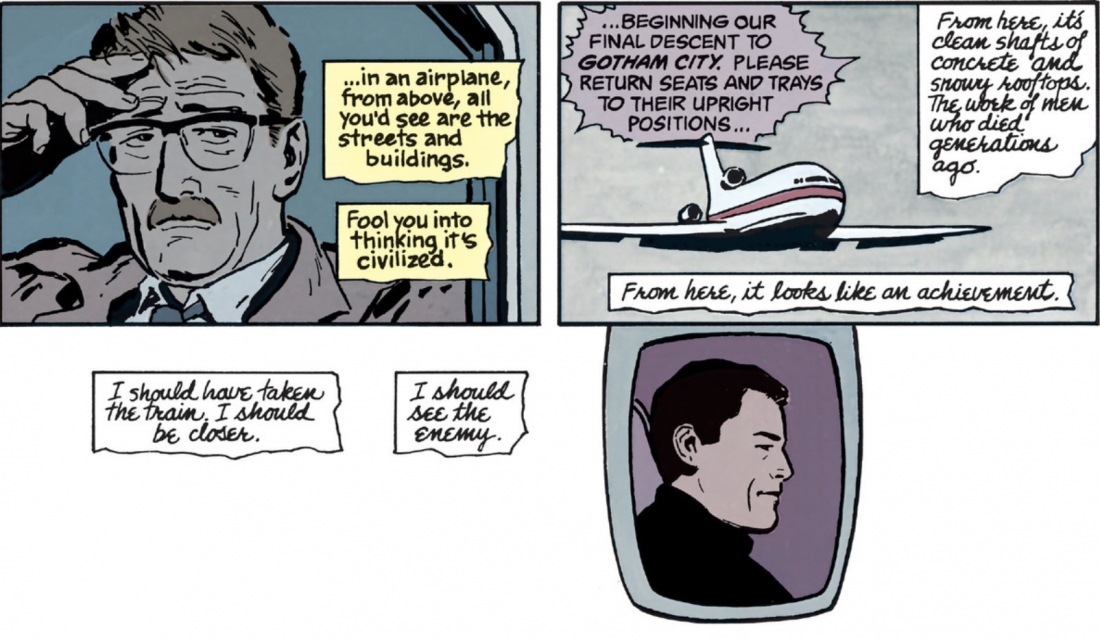
There is nothing sentimental about Miller and Mazzucchelli’s Batman, for sentimentality brutalizes emotion. The story is a dark, moody one where not a lot happens compared to other comic books. But it was Miller and Mazzucchelli’s delivery that would come to define the Batman mythos. It was a retelling that didn’t do much to contextualize the suffering at the center of Bruce Wayne’s story so much as simply show you. Miller and Mazzucchelli took a story that looked like this, and dragged it, kicking and screaming, into the modern age until it looked like this:
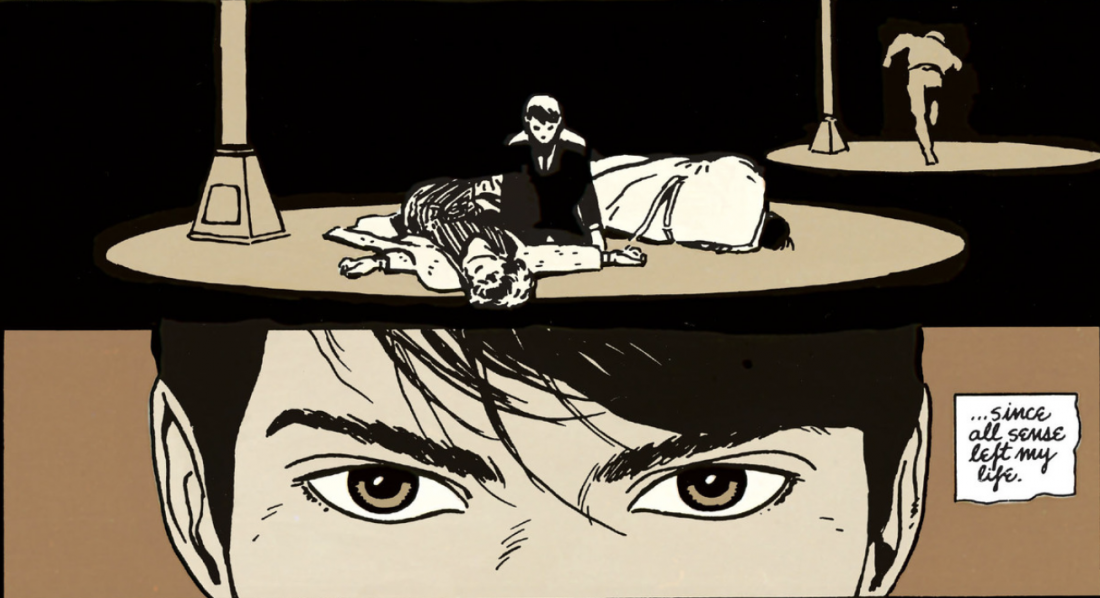
Look at the expression on the boy’s face as he remembers the night in which all sense left his life and you can begin to see the never-ending problem — Bruce Wayne is trying to bring sense to a world that is increasingly senseless and perhaps never made sense to begin with. In Miller’s story, we watch as he slowly, methodically puts together the roadmap to remove the corrupt from their seats of power. This line still fucking gets it done all these years later.
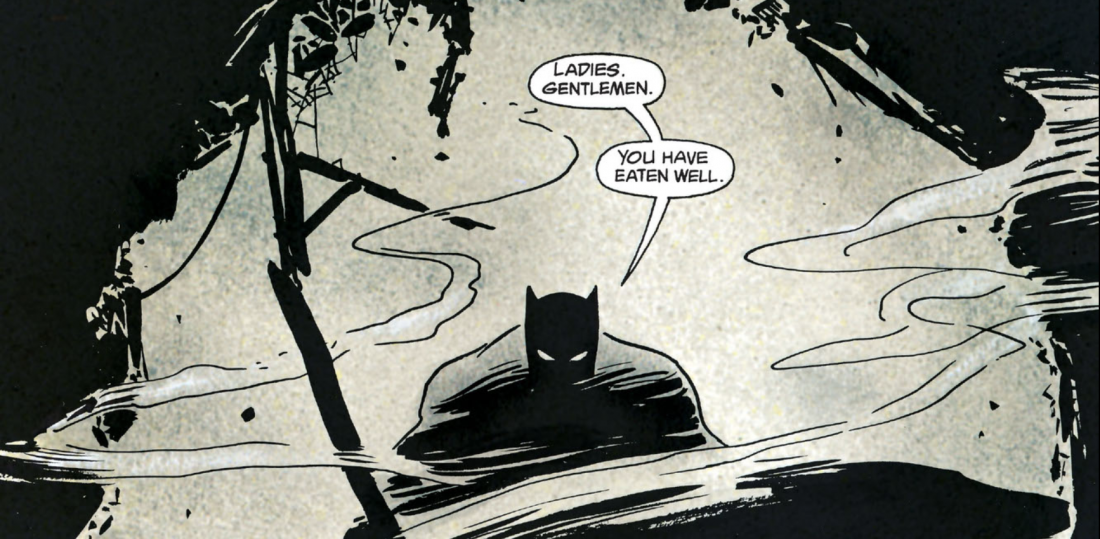
But we know its all for naught. Batman and his new ally, Gordon, will remove a corrupt commissioner and wealthy mob bosses only to have them replaced with a murderous clown, roid-raged wrestler, and a slew of other villains. He will get new allies along the way, only to see more villains, more sacrifices, more misery. One step forward, two steps back. One night at The Mask of Zorro, two dead parents. It never changes.
Depending on the writer penning the Batman story, it can serve as a reflection on how we think and feel about our own reality. Why are the cops in Gotham corrupt? That’s just the way it is. Why is police brutality still so prevalent? That’s just the way it is. Why does Bruce Wayne love this city enough to devote his entire life to cleaning it up when we all know he never will? Because it’s better to rule in hell than to serve in heaven, right?
Sorry, that last bit has to do with religion, and we’re talkin’ about mythology, cuties. And at the heart of any good story is a question of morality, right? Year One is Jim Gordon’s story as much as it is Batman’s; both characters dominate nearly the same amount of panels on the page. Batman cannot be corrupted, but Gordon, well, he’s another story. You see, Gordon isn’t all that concerned with making sense of this world, he’s lived enough to know it never will. He just wants to make things right.
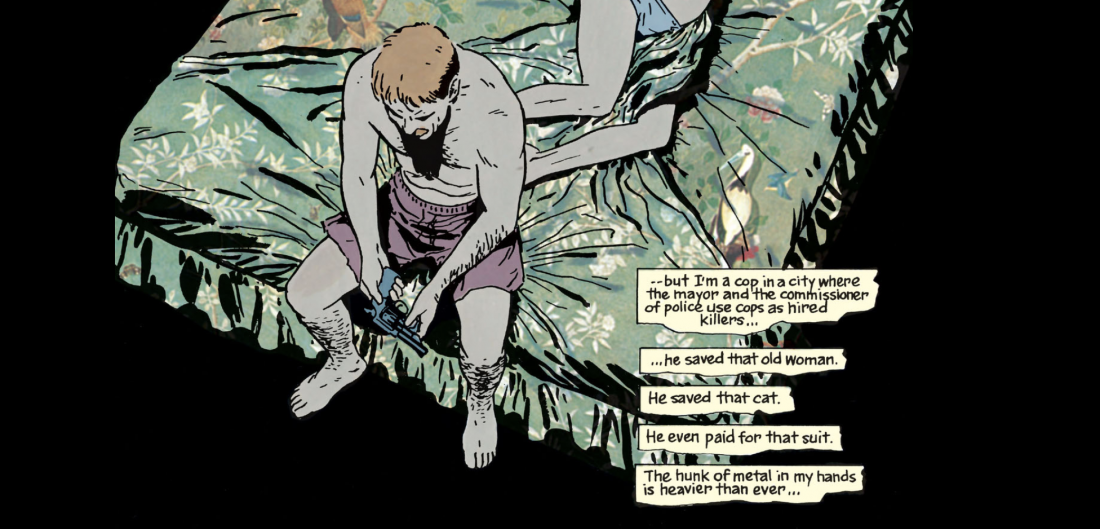
But if there is a right, you better believe there is a wrong, too. If one half of Year One is watching Bruce Wayne descend further into the inhuman Batman, then the other half is watching Jim Gordon painfully gasping for humanity. What is the worth of being the one good cop in a department full of dirty ones? Does one deserve forgiveness after an affair? What does it mean to bring life into a world so dangerous? These are questions only Gordon can face, if not answer, as he too enters the same war as Batman.
But, on second thought, there is an explanation for why Gotham will always be rot with corruption, for corruption is in the DNA of Batman. The comic’s creator, Bob Kane, came up with the character only after he found out how much money the creators of Superman were making. Motivated by fame and fortune, he co-created Batman with writer Bill Finger, gave him none of the credit, eventually cut him out and chased in, vehemently denying it until after Finger died.
Batman at point-blank
In Hamilton’s Mythology, she highlights the potential importance of a poor farmer named Hesiod who may have written two poems essential to Greek mythology. She proposes that if he did write them, then he was the “first man in Greece to wonder how everything had happened, the world, the sky, the gods, mankind, and to think out an explanation.” Miller was the first writer to think how everything had happened — the murder of the Waynes, Gordon’s arrival to the city, how Gotham became so corrupt, the cape, the cowl, the partnership and trust between Batman and Gordon — all of it.
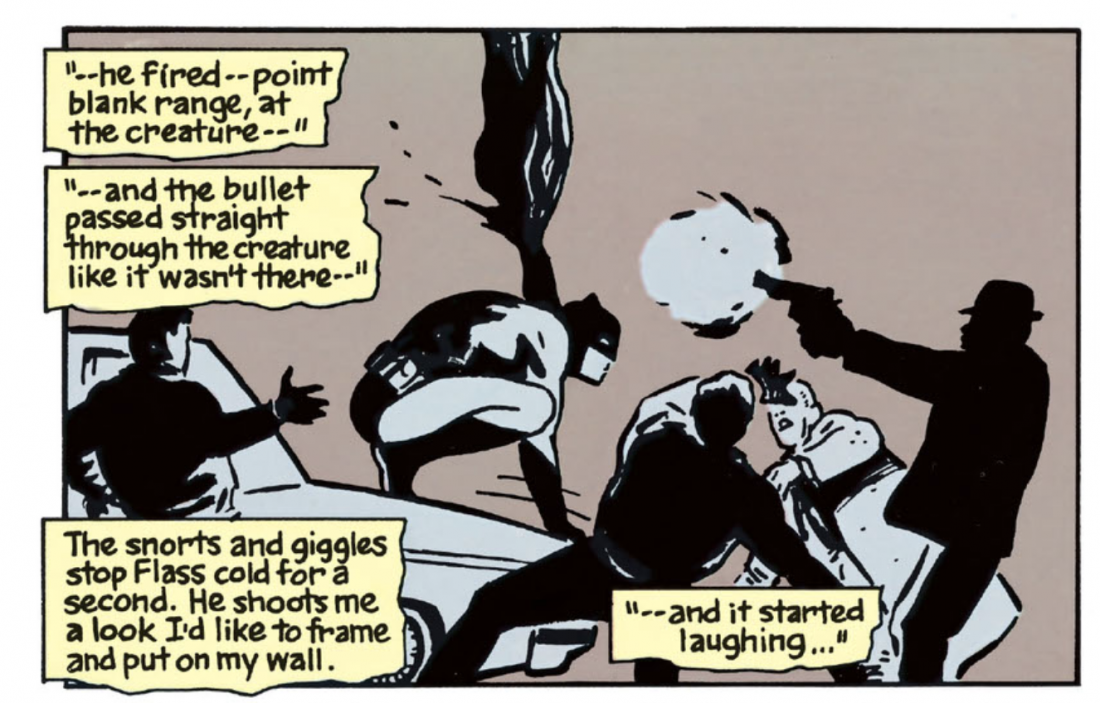
It’s how we got here, not why. Look at this panel above. It defines who Batman is in a single frame. Flass, the dirtiest and meanest of all the shit cops in Gotham PD, is recounting his first encounter with the creature of the night. Here is a man whose parents were murdered by a criminal with a gun in front of him as a child, laughing in the face of a criminal with a gun. How can he come face to face with his own tragedy every single night and come out on top, even if it’s just for a night?
Because that’s just the way Batman is.
***
The Hundreds | Batman Collection releases on Thursday, September 5th at Midnight EST
